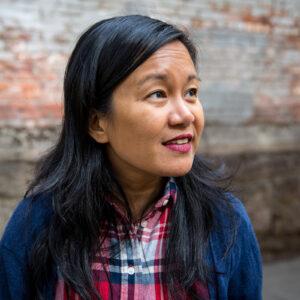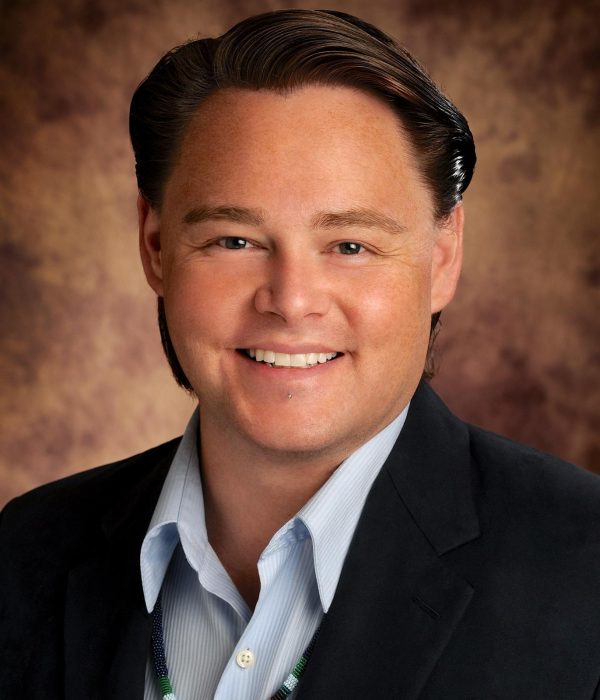
NMTC Compliance and Asset Manager
A photo of Nixya’awii Education Center.Photo courtesy of J.D. Tovey.
In 2018, the Confederated Tribes of the Umatilla Indian Reservation (CTUIR) built a new educational facility in Pendleton, Ore., using New Markets Tax Credit (NMTC) financing from Ecotrust CDE. The educational facility, called Nixya’awii Education Center, includes a Head Start program, day care, CTUIR education department, language program, and Nixya’awii High School, a charter school of the Pendleton School District.
Here, Maralea Lutino, our NMTC Compliance and Asset Manager, catches up with John David “J.D.” Tovey III (Cayuse, Joseph Band Nez Perce), the Planning Director at the Tribal Planning Office for the CTUIR. They discuss the outcomes of this NMTC project and the reservation’s upcoming projects and goals to build generational wealth.
Preparing for this meeting, I asked that very question to the Education Director this morning. She said the biggest impact that she’s seen is in the high school: attendance rate has gone from about 68 percent to 90 percent in its first year. Truancies have fallen to the floor. The increase in attendance has extended to the Head Start and daycare [programs] as well.
Hearing those numbers really made me happy that the school is so much more conducive to learning for the kids. It was a real challenge in the old school facility for kids to come out fully college-ready, and a lot more of the kids are now coming out college-ready. I’m very proud. I think it absolutely has to do with the building and learning environment.
Now everyone has their own space. The language program is directly adjacent to the little kids and Head Start, and they can do immersion programs. The immersion programs speak nothing but the Native language to the little kids and teach them the CTUIR Tribal languages.
The thing that everyone was most excited about was the gym. Our older gym—it was a sweatbox in there, during a game when it was shoulder-to-shoulder. The new gym has turned into a real community asset. It’s just a really lively place. And from what I gather, the students have taken ownership of it, like “it’s their school,” whereas their older building felt like “this is the place where we were stuck during the day.”

Portrait of J.D. Tovey. Photo courtesy of J.D. Tovey
We have a Comprehensive Plan that goes until 2030. It has long-term goals and objectives such as economic development, housing development, and personal development, like job creation and things like that, for the Tribe.
We’re working on, as always, economic development projects through Cayuse Holdings, which is now an 8(a) organization. (8)a is a designation through the Internal Revenue Service, and it means it’s a certified Native- or women-owned business, which elevates their ability in government contracting. It allows you to get your foot in the door, until you get big, and then you graduate the program and start competing against everybody else. It’s been about a year or two since they got the 8(a) status. It’s been really great. They’ve done a handful of great business acquisitions and business development under that designation.
At Wildhorse Resort and Casino, we just completed an expansion that includes a bowling alley and a food court. It is wildly popular—and despite having opened in the middle of a pandemic, it has continued to thrive.
The other big project we’re working on is housing. A housing study we did back in 2017 showed that we actually could have a surplus of housing designed for those at or below poverty level, once we have available housing options for those in the market-rate range to move. We have a number of people who have salaried out of those low-income homes but have had limited housing options to move to.
What we identified as our largest need is market-rate homes. So once we create these market-rate homes and apartments, then people can move out of the subsidized homes and provide space for other people on the waitlist. Construction on our first major market rate housing developments will be in the spring of 2022.
“
We’re hoping this helps foster and build that middle class, provide space and support to build businesses, and rev up the economic engine.
We’ll have two projects near each other: (1) Nixya’awii neighborhood, which will include 40 market-rate home sites for individuals to build their own homes and (2) a market-rate apartment/condo complex that will have approximately 25-35 units. This new apartment complex will be just directly north of Nixya’awii Education Center, and the subdivision will be directly south of the educational facility. So we’re kind of creating a residential neighborhood.
Yeah, that’s the anticipation. And to that end, one of our projects is completing a trail for kids who live further away but are still close enough to walk. There’s a 400-foot section where there’s no sidewalks, and it was very difficult to get to the campus from where many of the students live. We got grants through Safe Routes to School and the Community Paths Program, both through Oregon Department of Transportation. That’ll be constructed in the spring.
One of the biggest things we’re working on—and I can’t wait for the new census data to be finalized—is here in Native Umatilla County, our household income profile has this “camelback.” It’s highly skewed to the right. We have a high number of people on the poverty side—most rural areas have incomes highly skewed to the right. But we noticed in 2000, on the other side of the bell curve, there’s a little bump that’s been building. And in 2010, it was a significant bump, and in 2020, I want to see how that’s improving.
“
We’ve been a people on our back for 100-plus years, and we’re now getting up off our back, and we’re starting to stand up. The emergence of this middle class is kind of a testament to that—and now we’re walking, and soon we’re going to be running.
That bump is the emergence of middle-class Natives within Umatilla County. We want to see how that’s improving in 2020, which drives the need for middle-income housing and those types of projects. It also means that there are more and more Tribal members who now have economic freedom to start investing in local businesses, start their own businesses, and then start doing community reinvestment, like through our school districts or through supporting artists and things like that. And as that’s growing, we also want to have a support system there, to maximize their participation in the community.
A lot of the history of the Tribe has been focused on the people at the very low end, and while that will always be a priority, we also have to provide unique services and support to those in the middle and higher end of the economic spectrum.
We’ve been a people on our back for 100-plus years. We’re now getting up off our back, and we’re starting to stand up. The emergence of this middle class is kind of a testament to that—and now we’re walking, and soon we’re going to be running. And so I can’t wait. I can’t wait to see what the next 50 years are going to do.
The Tribe actually just had an open house for our Community Development Financial Institution (CDFI) called the Nixya’awii Community Financial Services (NCFS). They’re highly involved in the housing project; the homeownership program is now through NCFS.
So the home sites that we’re creating are going to be lease lots. They’re 99-year leases on trust lands and reserved for Tribal members only. So we’re figuring out how to tie them in with a loan product that allows Natives to build houses.
The idea of the CDFI is to help Tribal members to build their wealth and without a predatory lending agency or help keep money reinvested locally. [They can help tribal members] get low-interest, solid loans that are backed by the Tribe and the CDFI, to be able to improve credit scores, improve loan capability, and financial literacy and capacity.
We’re hoping this helps foster and build that middle class, provide space and support to build businesses, and rev up the economic engine—so then our economy becomes even more diversified and self-sustaining. I think it’s really exciting.
So Hamley’s is one of the oldest businesses [in downtown Pendleton]. It’s a wonderful place. It’s a tourist stop; it has a great shop area. And so we have purchased it; it is now in one of our holdings in town.
We [the Tribe] are more and more part of the community. I think [initially] there was some fear, like “The tribes are coming; they’re taking us over.” But then [the city is realizing] we’re not doing that, and I think the City of Pendleton is realizing the full potential of what partnerships with us could be, and other opportunities are always coming up.
“
We really are in a reawakening—the Indian reawakening.
There are at least four conversations going on about other potential partnership projects with the City of Pendleton in economic development, transportation, transit, etc. We’re just like any other entity. It’s a partnership; it’s a business investment. What’s best for the City of Pendleton is best for Hamley’s, which is good for the Tribe, in order to be able to improve everyone’s economic status.
I think, at some level, all tribes in the [Pacific Northwest] were knocked on their back in the mid-1800s or even earlier. And I do believe that since at least the early 1980s, a lot of the tribes, through capacity development, economic development, and investment, are going back. We really are in a reawakening—the Indian reawakening.
Some tribes are ahead of others, but I do think that the tribes are really ready. A lot of times, the tribes have become very self-reliant and really excelling at that. But I think a lot of tribes are also now to the point that “We’re now open for business. We’re ready to start engaging more where we’re toe-to-toe on economic development.”
Like I said, in the next 50 years, we’re really gonna see stock take off, when the middle income [group] really feel their power.
Thank you, J.D.

Current Project
Learn how we mobilize New Markets Tax Credits for projects that strengthen climate resilience, intergenerational wealth-building, and lands and waters stewardship